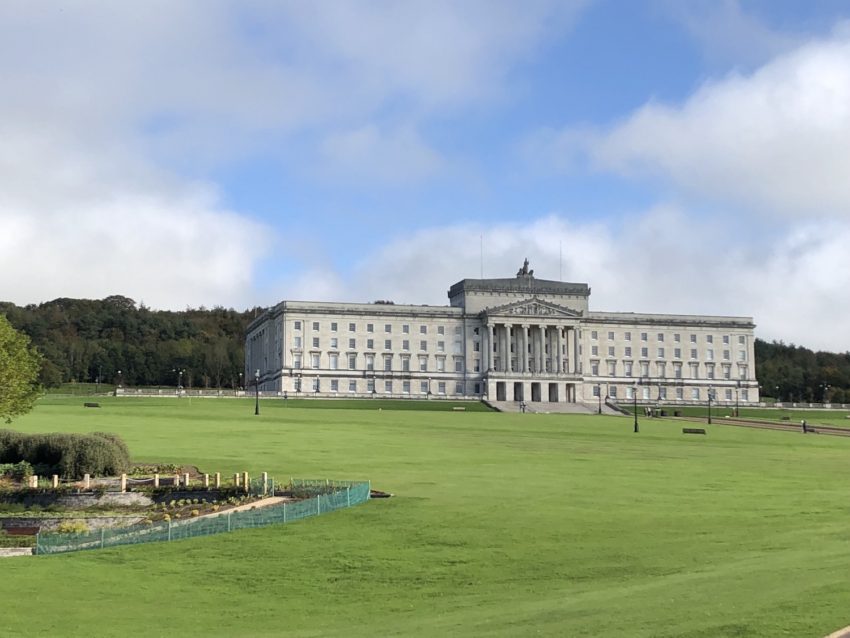Belfast was synonymous with bomb blasts and shootings in my youth, a city where Ireland’s Unionist and Nationalist traditions clashed violently. Today, thanks to the peace process, it’s very much on the tourist trail and not shy about being the birth place of the Titanic.
The conflict that raged for around 50 years, called The Troubles with a remarkable degree of understatement, cost the lives of more than 3,500 people and it still simmers beneath the surface, giving the city an edge. The divide between Nationalist and Unionist is impossible to ignore if you venture beyond the cleansed 21st century city centre, where you’d be hard-pressed to spot any signs of the violence and destruction.
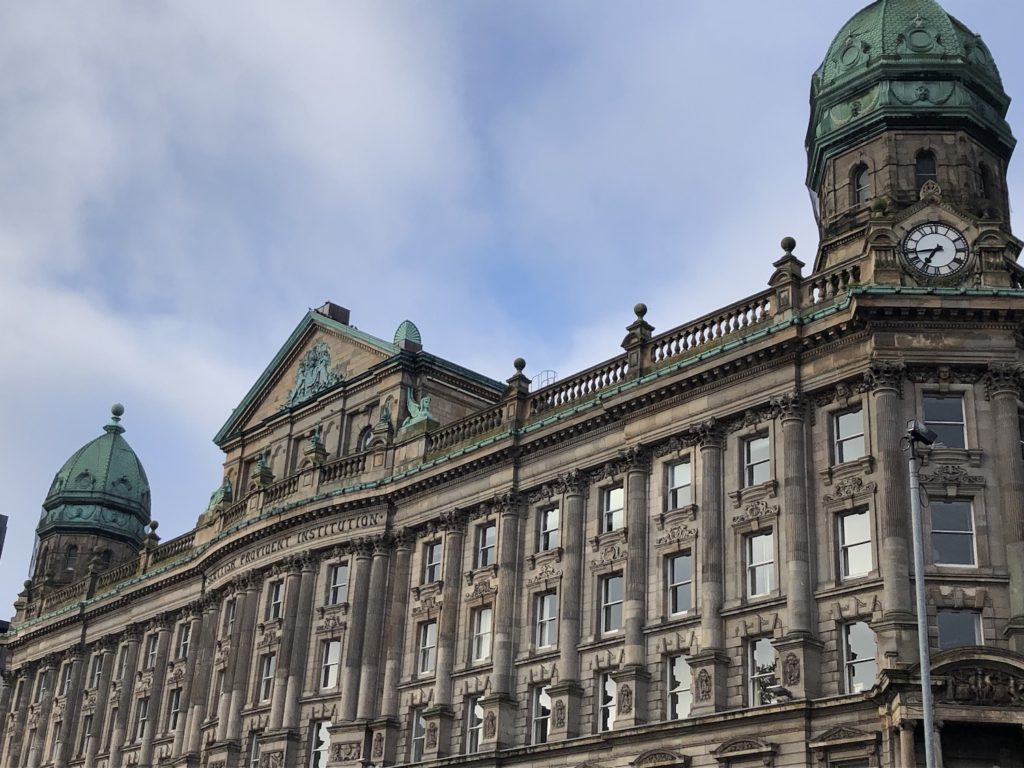
We popped over to Belfast from Terminal 5 at Heathrow, where Graham had been attending a conference and given us the perfect excuse to organise a city break. After landing at George Best Airport early on an October Friday evening, we checked in to the Flint just a few yards from the Victorian City Hall and round the corner from the Europa Hotel, a landmark reminder of the conflict. It was bombed more than 30 times and often featured on the news bulletins over the years, despite the ring of steel that was supposed to protect the city centre from attacks. Today that ring of steel is gone and we were both surprised by the absence of police.
Opposite the Europa on Great Victoria Street is The Crown, which we stumbled upon by chance while seeking out a restaurant. The pub must be one of the best examples of a Victorian gin palace in the UK, complete with extravagant woodwork, tiling and stained glass. Inside are gas lights and a number of wooden booths or snugs. Only when we were looking it up while supping on one of the brews did we realise that we were in Belfast’s most famous pub, one that’s owned by the National Trust. Further down the road we parked ourselves at the busy Nu Delhi, a very good Indian restaurant, and filled our bellies ahead of a few more beers.
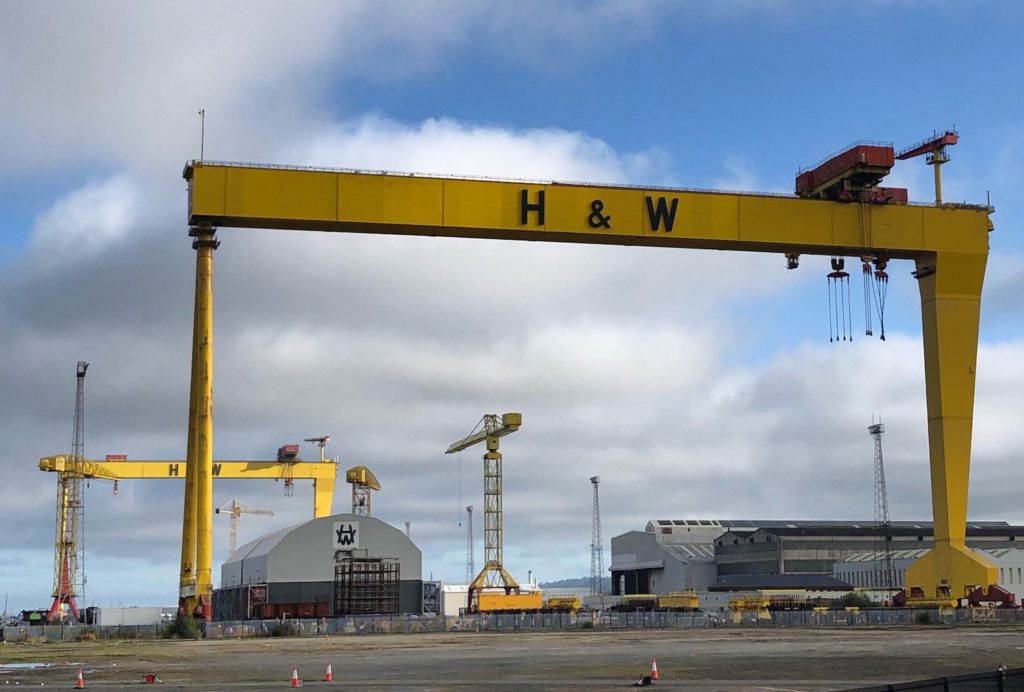
We were out reasonably early on the Saturday morning, a cool but sunny autumn day in Northern Ireland, because Graham wanted to do an open top bus tour of the city. It’s not an option we’d normally take but with such little time in Belfast it was a way to see lots of things in 90 minutes; he’d also been told it was a good way to get a grip on the recent history of the province. The route took us out through the old docks, the Harland & Wolff site dominated by its two giant yellow cranes and on to the Parliament building at Stormont (pictured top). We toured the historic city centre, full of grand Victorian buildings designed to reflect the power and wealth of the British Empire and Belfast’s ship building industry.
But the most interesting parts of the tour took us into the various strongholds of the Republican and Unionist populations, notably the Falls and Shankhill Roads in West Belfast. These areas are where sectarianism is alive and kicking and where hatred and contempt can thrive. Streets are plastered with the Union flag or the Irish tricolour, the flags of various clubs and paramilitary organisations, vivid murals, striking street art and countless political slogans. It’s colourful but also incredibly depressing, because while there is currently peace in Northern Ireland it’s clear that it wouldn’t take much to set the north on fire again. Symbolic of the divide are the dispiriting peace walls we drove past, barriers designed to keep the communities apart.
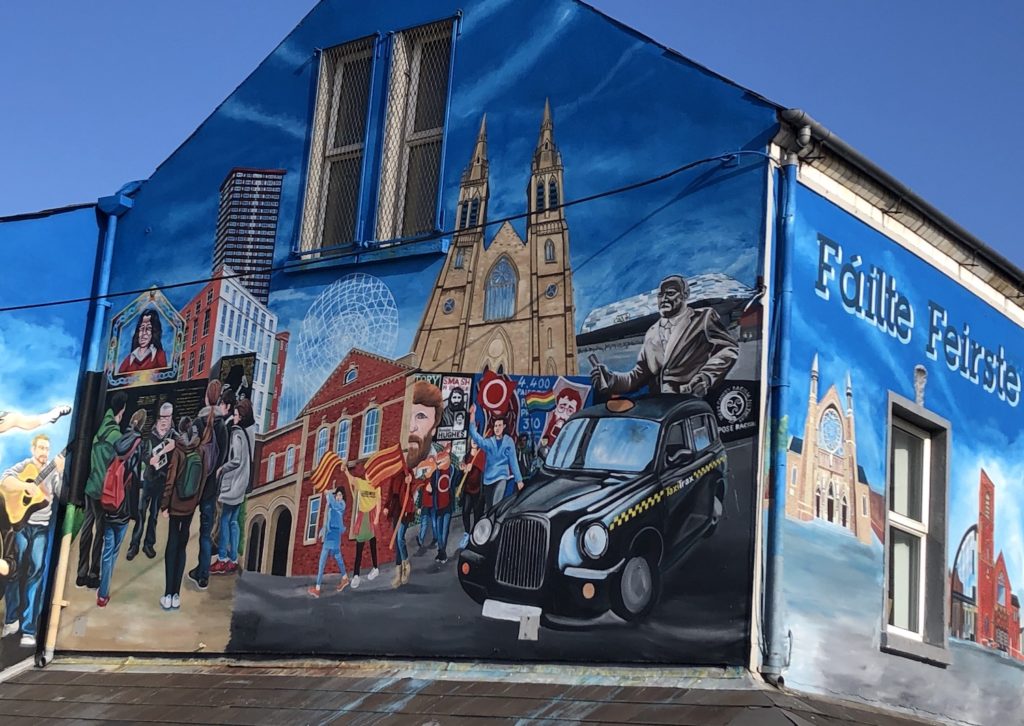
For lunch we walked down to the foodie haven of St George’s Market, a Victorian covered market full of food, drink, craft and antiques stalls and a popular spot with locals and tourists alike. It’s a great space, all be it one with a ventilation problem, and we went for a wander, bought a piece of retro art glass, had a coffee and stopped for a bite to eat. We then got a taxi out to the Crumlin Road Gaol in North Belfast, another of those buildings that was regularly featured on the news bulletins at the time of the Troubles. An old and gloomy Victorian pile built partly of black basalt, where everyday criminals and paramilitaries ended up behind bars, it didn’t close until 1996. Opposite is the old courthouse, an impressive building but now sadly if atmospherically dilapidated and in need of a saviour.
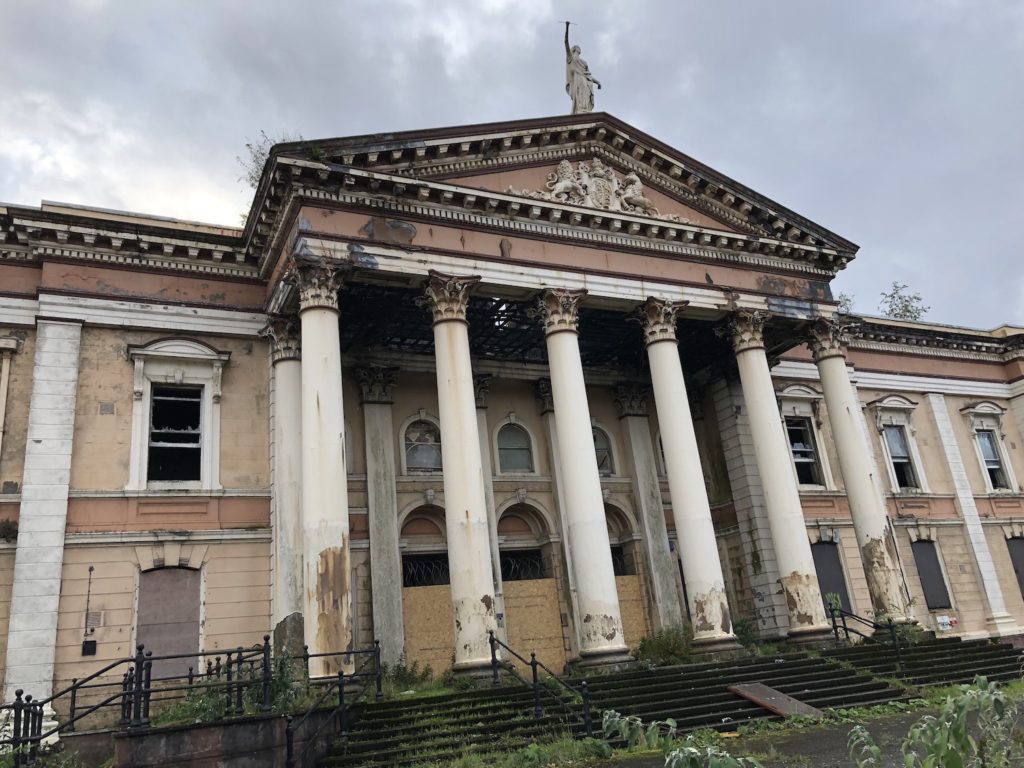
A damp tunnel, once used by prisoners and guards, runs between the courthouse and the gaol and we went down there while on a tour of the prison. It was reinforced beneath the Crumlin Road to prevent car bombers wrecking it. The design of the gaol itself is of the panopticon type, with a series of wings radiating away from a central command post. We went into some of the cells, representing different periods of the institution’s history, heard about how prisoners lived and escaped, and experienced its oppressiveness. By and large it was an informative tour but the focus on the condemned cell, the hanging room and the noose made me very uneasy and I couldn’t wait to get out. Haunted by the victims of such a terrible punishment, it felt as if we were using them for our entertainment.
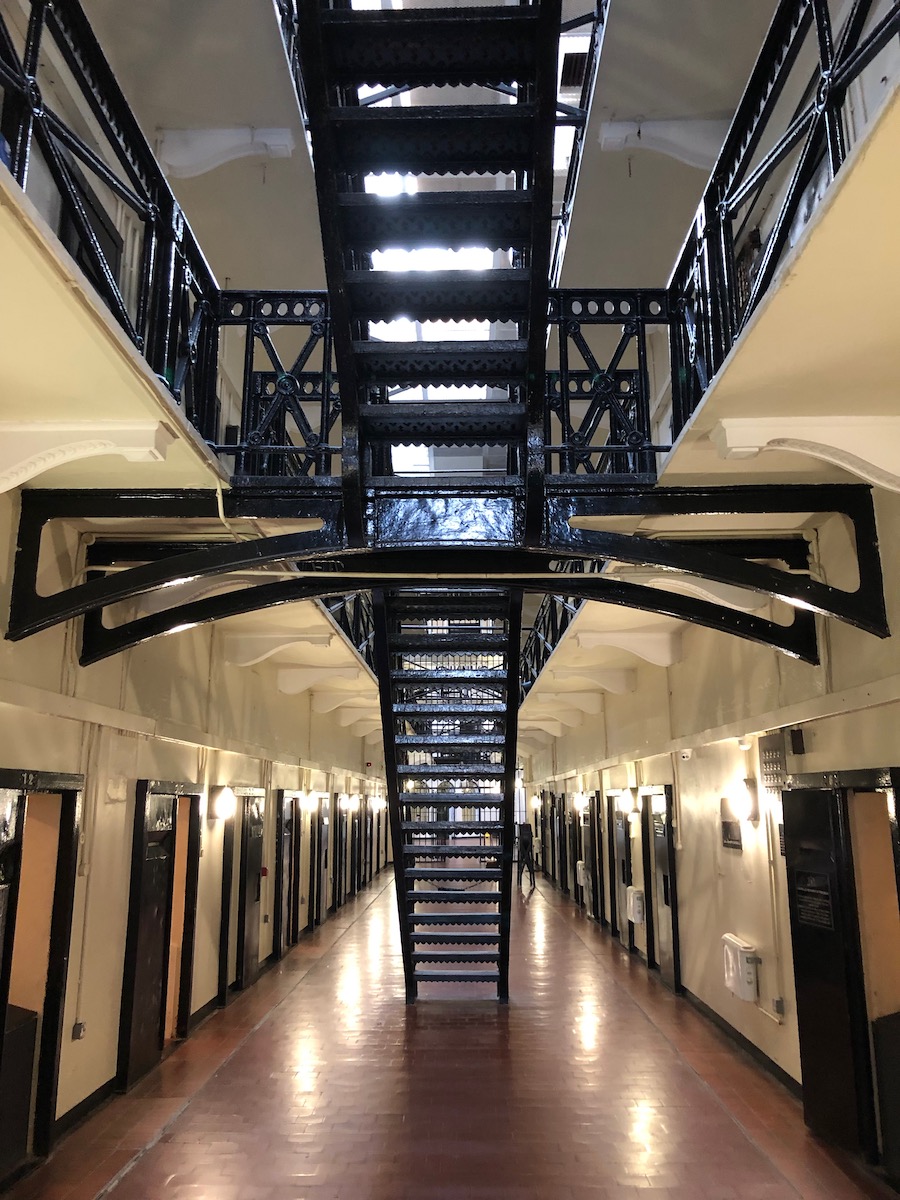
Our evening saw us walking to the Queen’s University Quarter, a lively and attractive part of town to the south notable for its bars and restaurants. We ate at Molly’s Yard in a converted Victorian stables, a friendly restaurant with great beer from the Hilden craft brewery. The food is modern Irish, very good and filling so we needed a walk back to the city centre in an effort to make space for a few more drinks. We ended up at Sweet Afton, a bar we’d frequented the night before in the central Linen District, and it was busy on that Saturday night with live music.
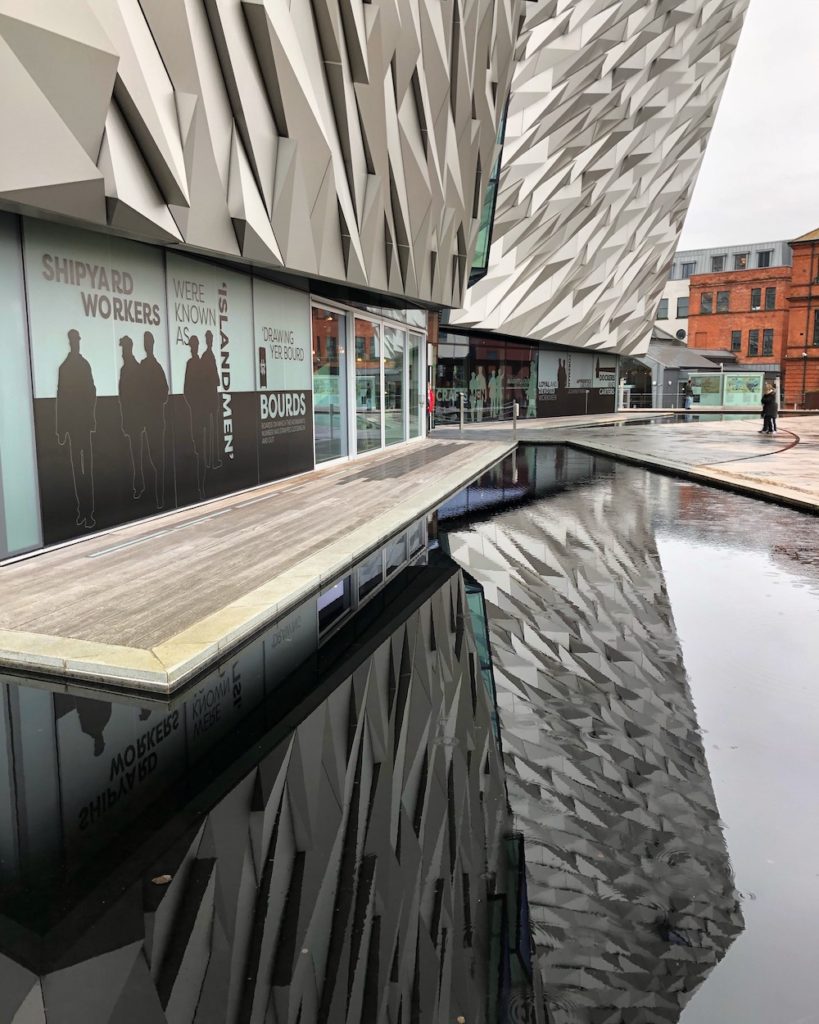
Sunday dawned wet and miserable and clouds hung low and ominously over the mountains to the west of the city. We took a cab out to the Titanic Quarter, the name given to the regenerated waterfront that includes parts of the old Harland & Wolff site. It’s got flats, offices, hotels, a film studio and, while we were there, a huge film set from the Game of Thrones series. The centrepiece of the development is the Titanic Belfast, a striking building in the shape of a star with wings that reflect a ship’s prow.
Even on a grim autumn day it was busy and the galleries weren’t easy to navigate with so many people clogging the exhibits. These tell the story of the industrial growth of Belfast, the rise of Harland & Wolff and the construction of their most famous ship and its sister vessels. It’s colourful and informative, pitched at just the right level and with some great old photos, interactive elements and artefacts. A novel ride took us on a journey through the shipbuilding process and there was an excellent gallery devoted to the discovery and exploration of the wreck. I was surprised by the lack of Titanic remains featured in the exhibition but I imagine they’re hard to come by these days, in the possession of private individuals and other museums. Not that this was in any way a disappointment.
And with that it was time to catch our flight home from the airport just a mile or two up the road, a FlyBe service to London City. I’d been impressed by Belfast, a vibrant, attractive city. Yes it has its problems, sectarianism is still alive and kicking and an ever-present threat to peace and stability, but the progress Belfast has made from the days of violence is remarkable. I look forward to returning…

